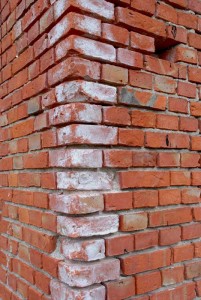We’d like to talk about what to call the maintenance of the mortar between the bricks in masonry construction. Technically, repointing is putting mortar between joints. Pointing is putting the mortar between the bricks to begin with, and tuckpointing is achieving a classic layered cake look. That does not matter, though, when both pointing and tuckpointing are often used in reference to repointing.

What matters is that you and your chimney professional agree on terms so that there is no disagreement about whether the job was done. Tuckpointing, especially, has a traditional meaning to brickwork pros, so if that is the repointing under discussion, they need to know it. Tuckpointing means achieving matches and contrasts and doing extremely detailed work, beyond the careful delineation and detailing involved in most repointing.
The point is keeping the water that destroys your masonry from penetrating the mortar. It is the stuff that keeps it from falling apart. Often referred to as “plastic mortar” because of its ability to contract and expand with the bricks, the’ point’ is what’s between them. “Mortaring cements” are different than “cement” because of the proportion in which certain components are added to the mix.
When the point is made too strongly, meaning when the mortar is harder than the bricks it unites, there is a very good chance the bricks will fall. If the ‘point’ is made again, it is ideally just as resistant to penetration as the original. If that is not exactly achieved, it should be of less strength. That will leave the weight of the bricks on themselves and the ‘points’ that are already providing solid support for them.
If their own weight rests on harder repointing rather than the bricks and original bonds between them, that is more weight to bear and adds stress that causes spalling. Spalling is the crumbling of your brick face, and is common when the bricks are being overwhelmed. It means they are bearing too much stress and that happens because the repointing was done incorrectly.
The bottom line is you should contact us for a professional chimney inspection. We’ll help you keep your chimney working safely and efficiently.
